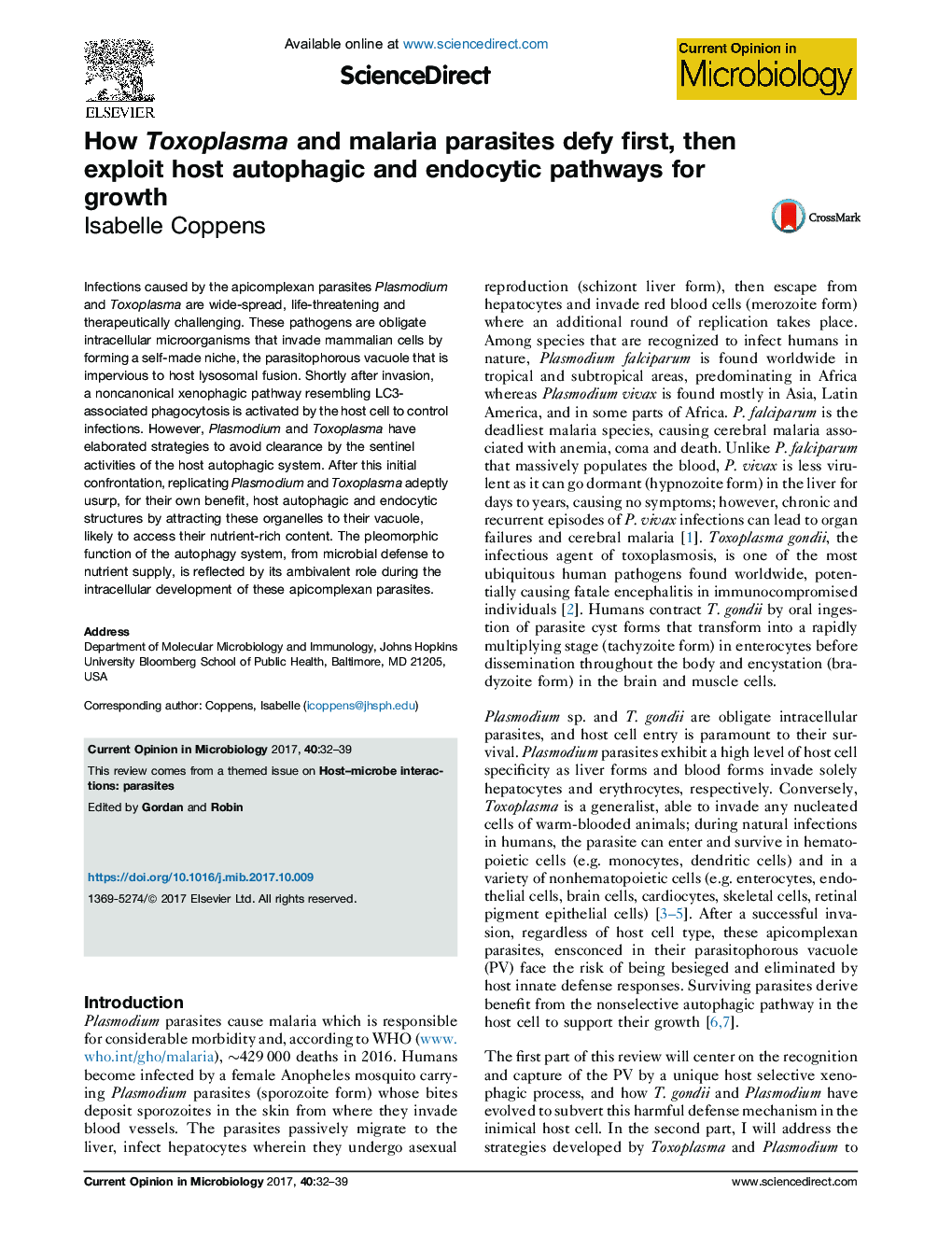| Article ID | Journal | Published Year | Pages | File Type |
|---|---|---|---|---|
| 8745123 | Current Opinion in Microbiology | 2017 | 8 Pages |
Abstract
Infections caused by the apicomplexan parasites Plasmodium and Toxoplasma are wide-spread, life-threatening and therapeutically challenging. These pathogens are obligate intracellular microorganisms that invade mammalian cells by forming a self-made niche, the parasitophorous vacuole that is impervious to host lysosomal fusion. Shortly after invasion, a noncanonical xenophagic pathway resembling LC3-associated phagocytosis is activated by the host cell to control infections. However, Plasmodium and Toxoplasma have elaborated strategies to avoid clearance by the sentinel activities of the host autophagic system. After this initial confrontation, replicating Plasmodium and Toxoplasma adeptly usurp, for their own benefit, host autophagic and endocytic structures by attracting these organelles to their vacuole, likely to access their nutrient-rich content. The pleomorphic function of the autophagy system, from microbial defense to nutrient supply, is reflected by its ambivalent role during the intracellular development of these apicomplexan parasites.
Related Topics
Life Sciences
Immunology and Microbiology
Microbiology
Authors
Isabelle Coppens,
